Written by Millie Mannering
The Hakai Institute conducts long-term scientific research at remote locations on the coastal margin of British Columbia, Canada. Photo: Millie Mannering
As we all know, anthropogenic activities are impacting marine ecosystems. I am passionate about studying these impacts in remote environments we often forget about. This interest led to my scholarship goal of exploring potential research avenues and collaborating with remote institutions leading the way in this field.
Naturally, I was immensely excited for the unique opportunity to work with The Hakai Institute in Canada. This privately-funded scientific research organisation conducts long-term ecological research at remote locations on the coastal margin in British Columbia. I would be involved with their team at the Calvert Island Ecological Observatory, located on the Pacific edge of the Great Bear Rainforest.
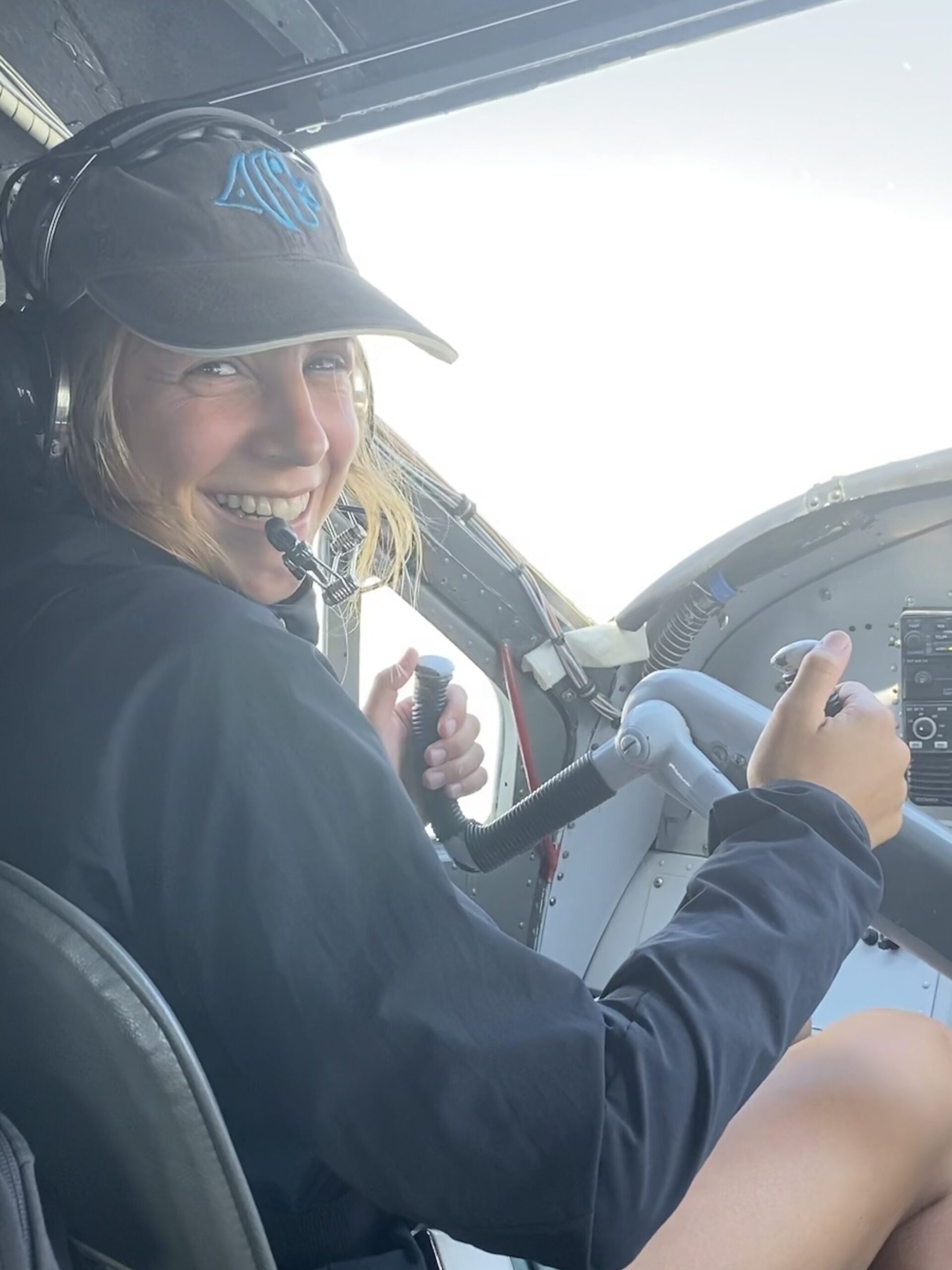

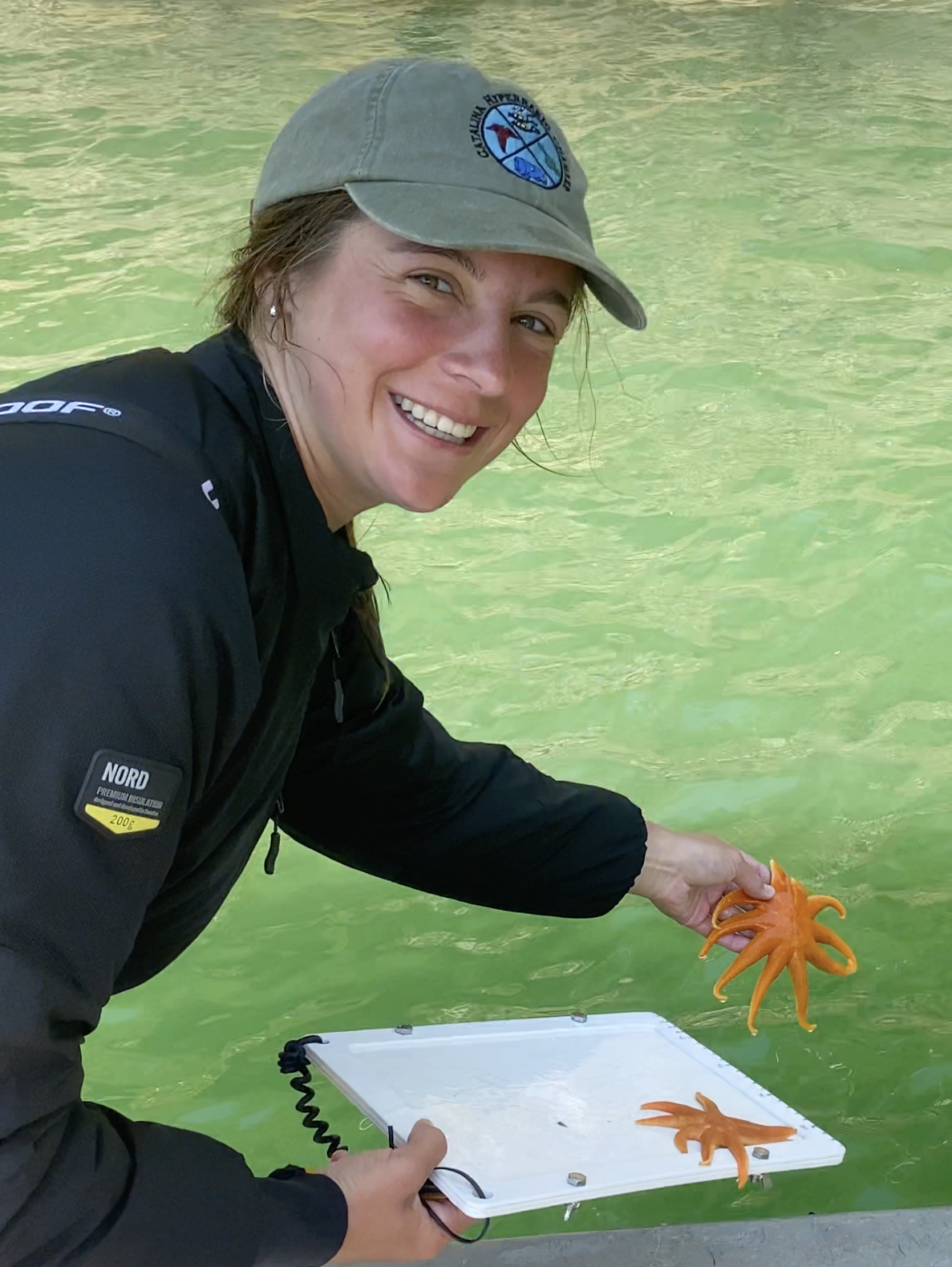
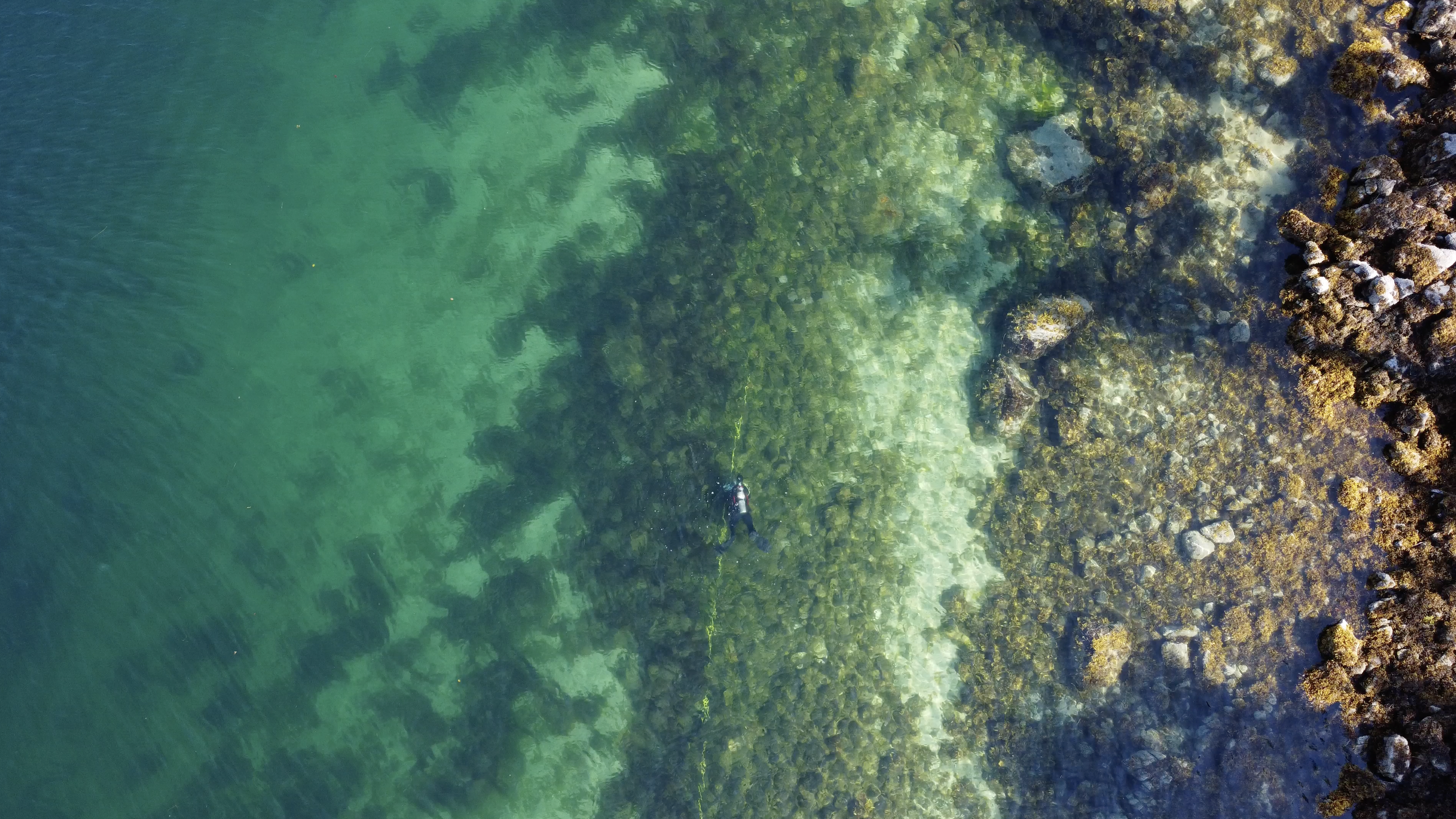
Left to Right: As an aviation enthusiast, I was very excited to help fly the Twin Otter seaplane to Calvert Island. Dive buddies, Zach Monteith and Derek VanMaanen always stoked during our time in the field! Analyzing sea stars during a surface interval. Derek VanMaanen conducting a survey along the transect line at our remote survey site in spectacular diving conditions. Photos: Zach Monteith and Millie Mannering
On this remote island, I joined the scientific dive team to assist with their Nearshore Ecology research projects. Our main focus was continuing the long-term research on sea star populations by conducting surveys to measure, count and identify them. I was amazed by the spectacular wilderness of our study sites as well as the diversity and abundance of sea stars along our surveyed transects.
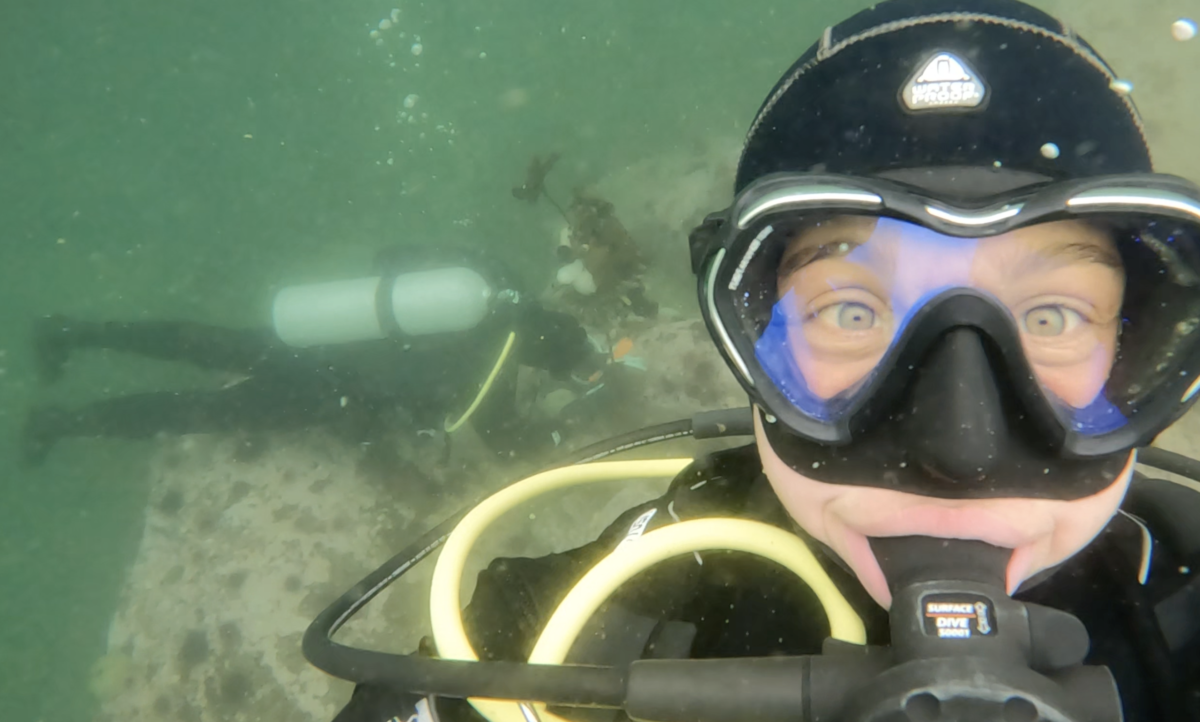
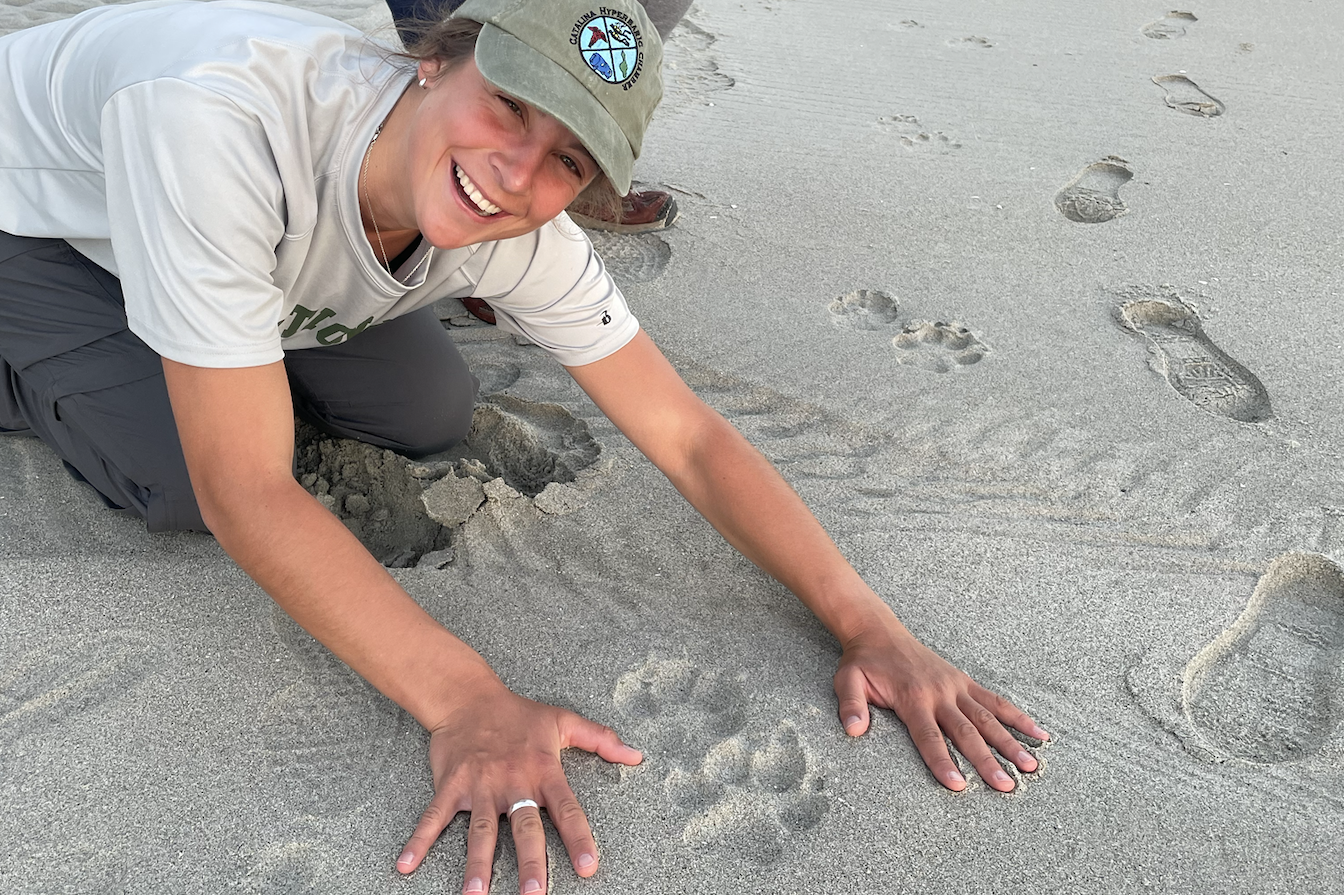

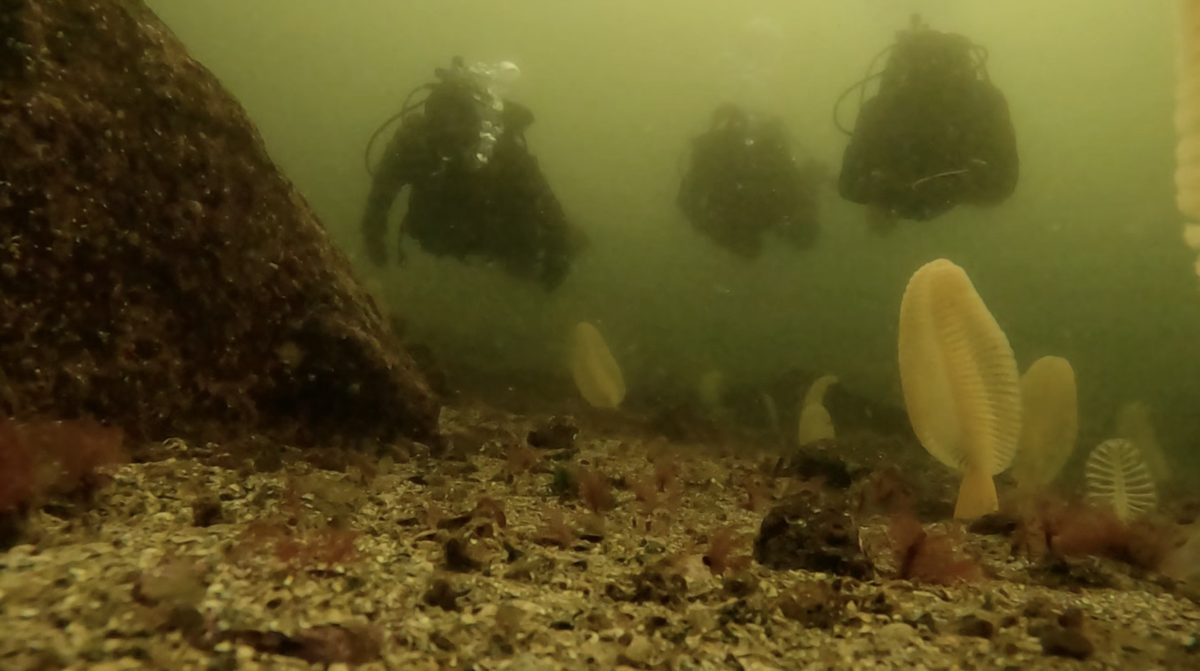
Supervising Zach as he conducts maintenance on a remote monitoring station. Fresh wolf prints on the beach in the morning! The team during a surface interval after a close whale encounter – a regular occurrence. The dive team surveying an impressive sea pen bed!! Photos: Zach Monteith and Millie Mannering
During our dives, we also monitored for sea star wasting syndrome (SSWS). This disease causes lesions, tissue decay and death. SSWS has dramatically stronger effects in coordination with above average water temperatures. It has catastrophically reduced sunflower star (Pycnopodia helianthoides) populations. Consequently, sunflower stars were nearly completed wiped out and are now critically endangered. This has wide ranging implications for the decline of kelp forests on the Pacific Coast because Pycnopodia are keystone predators. With decreased predation pressure on urchin populations, the resulting population boom can cause destructive grazing of kelp forests. This results in barrens and negative impacts on reef dependant species and is evident in areas, such as the Californian coast, where the local extinction of Pycnopodia has occurred. Learn more about their ecological importance here
I was thrilled to find numerous Pycnopodia during our surveys and was amazed by their huge size and brilliant colour. As part of our research, we conducted swab samples to gain an understanding of microbial communities living on Pycnopodia and their associations with healthy and diseased individuals.
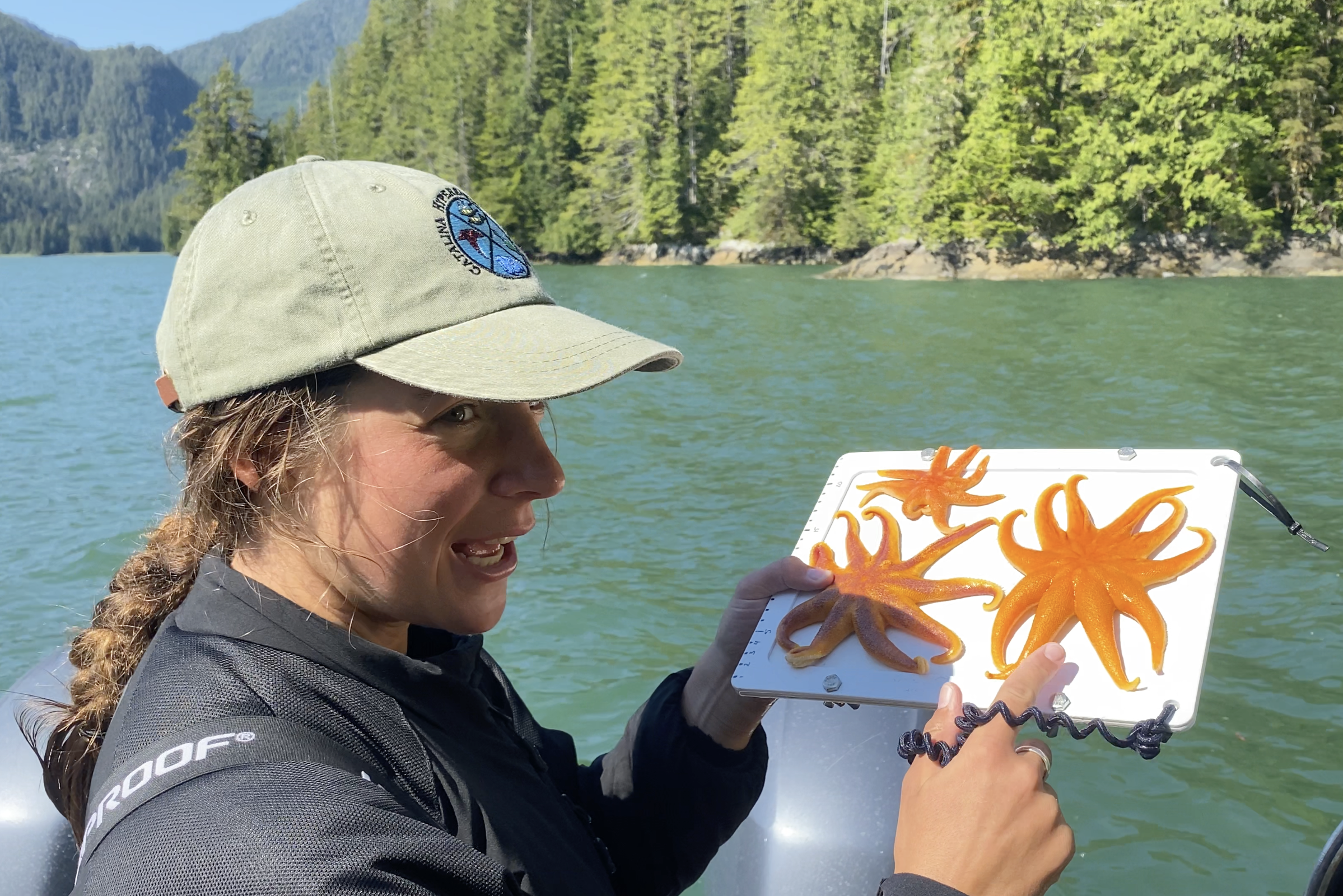
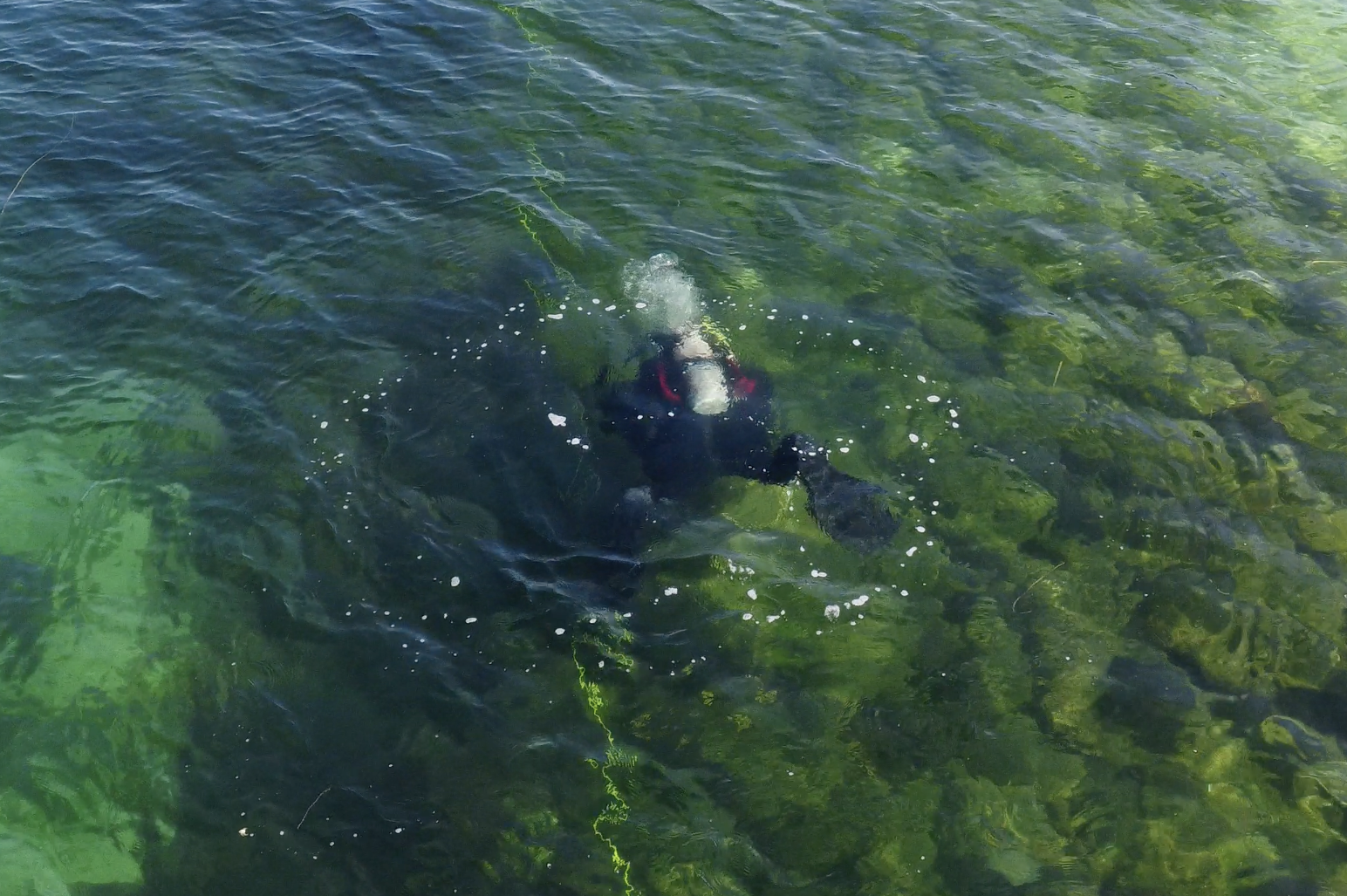
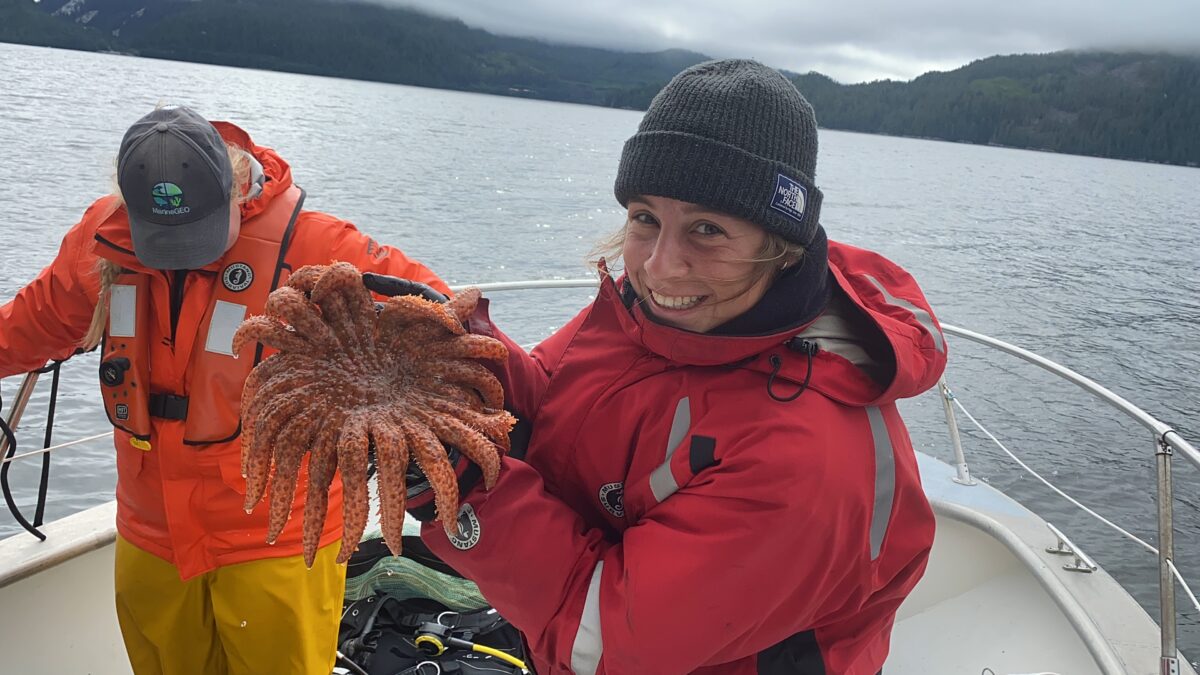
Discussing sea star identification and anatomy with the highly experienced and knowledgeable research team. Great visibility during sea star surveys. Millie Mannering very excited to be swabbing a healthy Pycnopodia individual collected during the dive. Photos: Derek VanMaanen & Zach Monteith
My time with Hakai highlighted the importance of gathering long term data sets and continued scientific monitoring to understand ecological health in remote areas. Calvert Island is a spectacular and unique place and I am in awe at the abundance of wildlife and fascinating biodiversity in the region. The impact of the research centre is expanded through collaborative efforts with various partners including First Nations, numerous schools and universities as well as government agencies.
It is very inspiring to witness the continued dedication of The Hakai Institute to conduct research, over an expansive range of disciplines, for many, many more years to come.
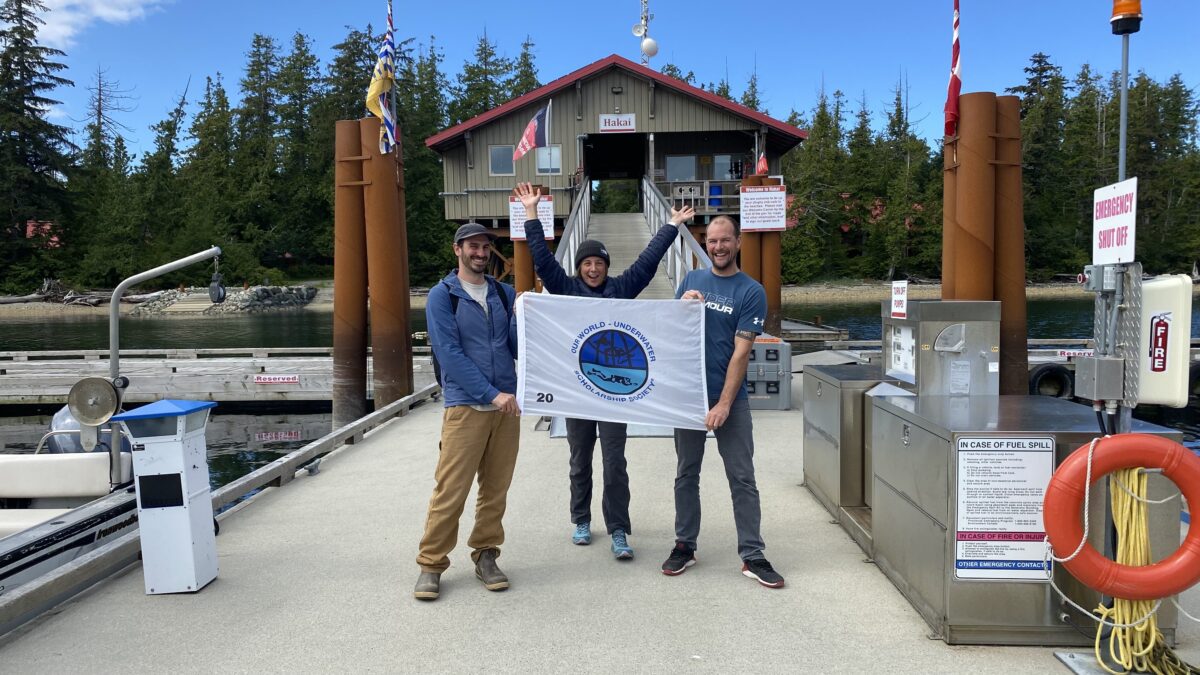
Celebrating a fantastic time at The Hakai Institute and flying the OWUSS flag with Derek Van Maanen and Zach Monteith! Photo: Krystal Bachen
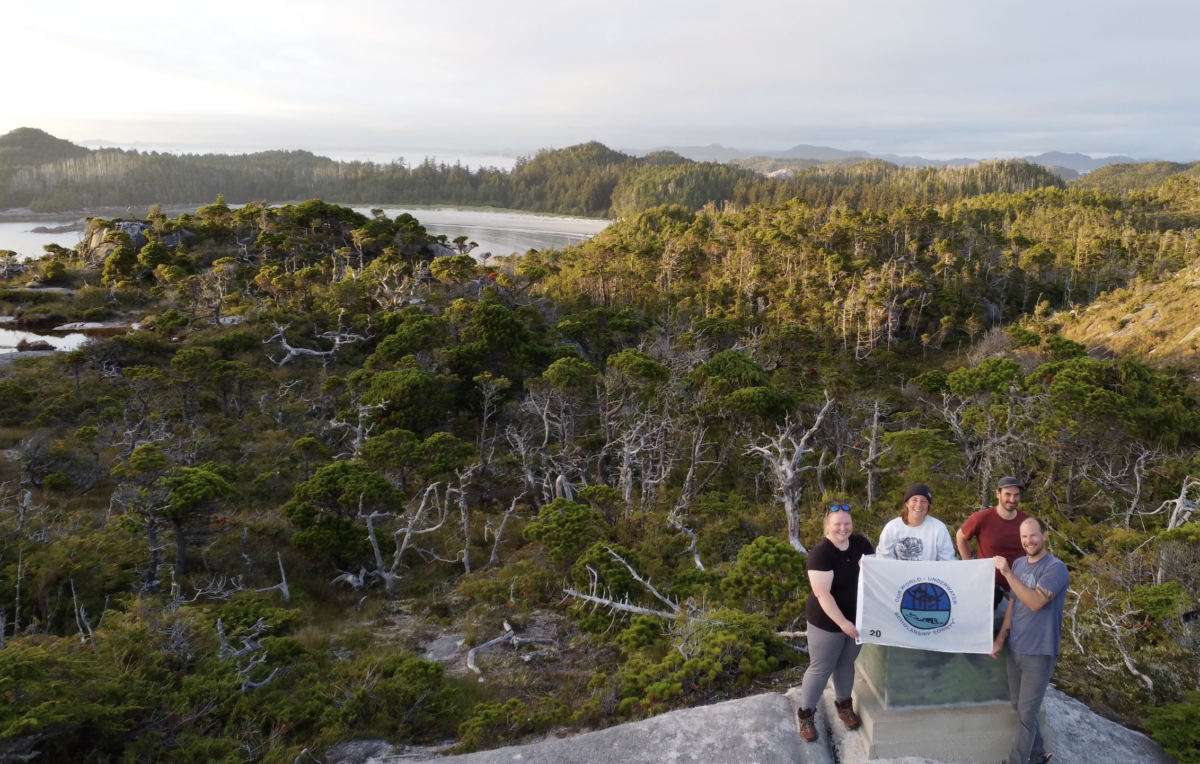
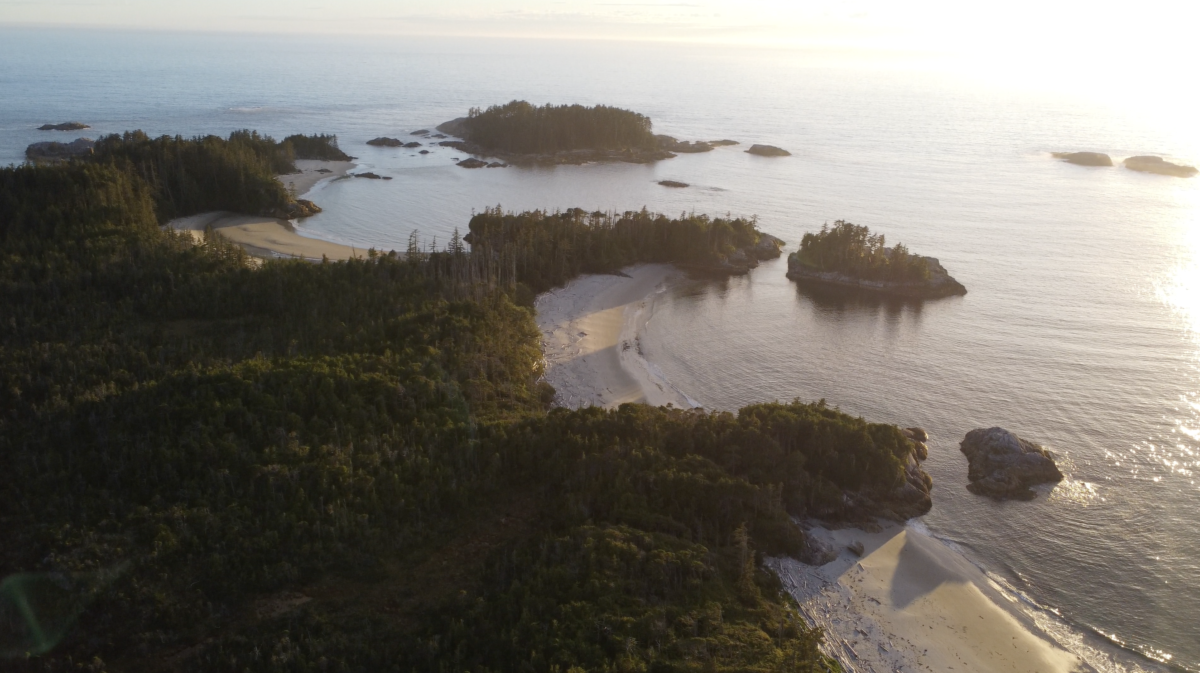
Our research team at the lookout on the summit of Calvert Island. Photo: Millie Mannering
Thank you to The Hakai Institute for warmly welcoming me to the Calvert Island Ecological Observatory. I feel very grateful that I had the opportunity to learn from and work with Derek Van Maanen, Zach Monteith and Krystal Bachen in the field. I thoroughly appreciated your patience, enthusiasm and eagerness to share your expertise.
Cheers to the amazing dive team for being so supportive, encouraging and absolutely dialled in the field.
Thanks again to the countless legendary people who continue to generously support me throughout the scholarship year. Thank you to the Our World Underwater Scholarship Society and Rolex for making the scholarship possible. I would also like to thank my equipment sponsors Reef Photo and Video, Nauticam and Light and Motion as well as TUSA, Waterproof, Tabata Australia and Suunto.
Trip Tune: Night Moves – Bob Seger
Top Tip: Otters are shy creatures, stay quiet around them!
Join me, above and beneath the surface, on my adventures throughout the scholarship year. Subscribe to my blogs, follow along on Instagram, Facebook or flick me an email!
Next up – It’s time to head to colder waters in the North…